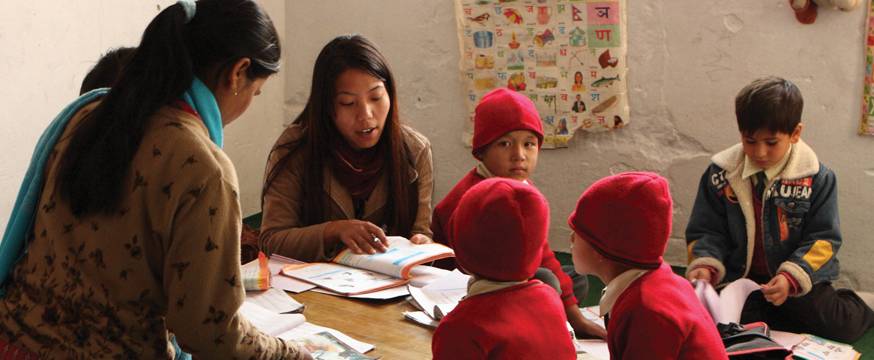
Research and evidence: Supporting international development
Research 17 Sep 2012 3 minute readACER is supporting the Australian Agency for International Development, better known as AusAID, through the Education Resource Facility.
ACER’s growing work on the Education Resource Facility (ERF) to support Australia’s overseas aid effort is occurring in both the delivery of help-desk research and analysis, and through the delivery of learning and development short courses, literature reviews, issues papers, workshops and seminars. The ERF is managed by GRM International, in partnership with ACER and CfBT Education Trust.
According to AusAID’s Helping the World’s Poor through Effective Aid: Australia’s comprehensive aid policy framework to 2015-16, AusAID’s primary purpose is to help people overcome poverty – particularly through aid for education, which is the flagship of AusAID’s aid program. The ERF team supports that aid effort.
To achieve AusAID’s key education targets for 2012-13 to 2015-16, Australia’s investment in education for 2012-13 is expected to be $980 million – about 20 per cent of Australia’s total official development assistance and a 16 per cent increase over the 2011-12 investment in education. The amount Australia will spend on education from 2011-13 to 2015-16 is expected to be around $5 billion.
While achieving AusAID’s key education targets is contingent on funding, it also depends on high-quality research and advisory support for staff in AusAID’s overseas posts and in Canberra. ACER is providing this high-quality research and advisory support in two ways through the ERF. First, ACER manages the ERF help-desk, providing rapid and reliable responses to requests for research and advisory support from staff in AusAID’s overseas posts and in Canberra. Second, ACER’s large pool of highly qualified education experts provides longer-term learning and development research and advice for AusAID on its strategic and policy priorities for education.
Those priorities are basic education for what AusAID calls ‘hard case’ out-of-school children and youth; improved quality of learning; and strengthened education policy and systems for better service delivery.
ACER’s research and advisory support for projects and programs addressing those priorities has included literature reviews addressing language issues in education in Nepal, social protection in the Pacific region, gender mainstreaming in education services and education management information systems in Papua New Guinea, analyses of assessment data on literacy and mathematics in Tonga and technical assistance on national assessments in the Solomon Islands.
At a glance: Key AusAID education targets 2012-13 to 2015-16
- Four million more boys and girls will be enrolled in school with 24 000 classrooms built or upgraded and 1.2 million students provided with financial or nutritional support.
- 190 000 teachers and 300 000 school officials will be trained and 12 million textbooks provided, contributing to 20 million boys and girls obtaining a better quality education.
- More than 100 000 people will be provided with disability services and more than 500 000 boys and girls will attend schools that are more accessible to children with disabilities.
- At least 17 000 people – half or more of them women – will be awarded tertiary scholarships to study overseas and return home to assist economic development in their country.
